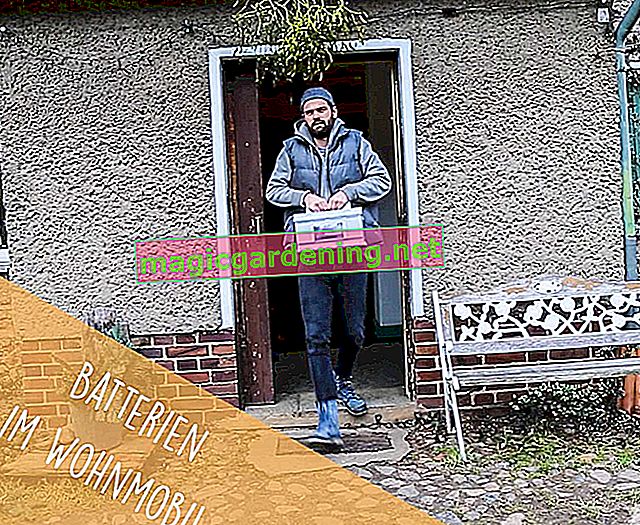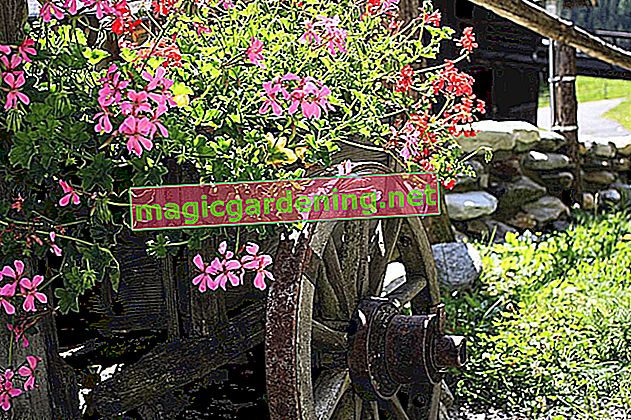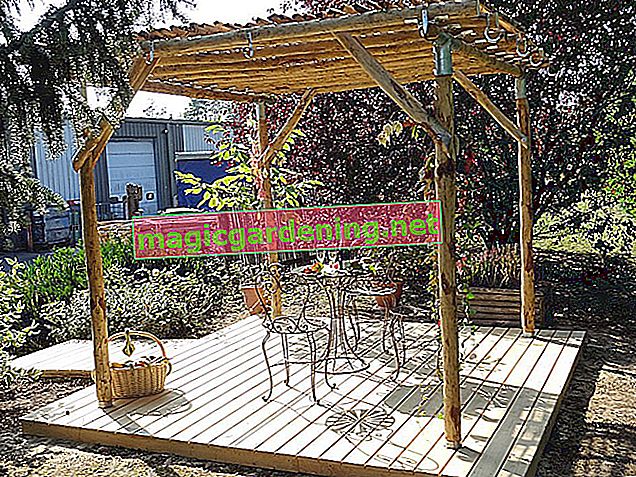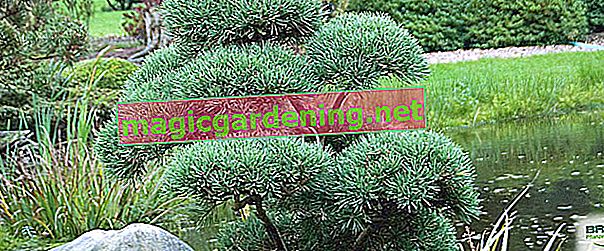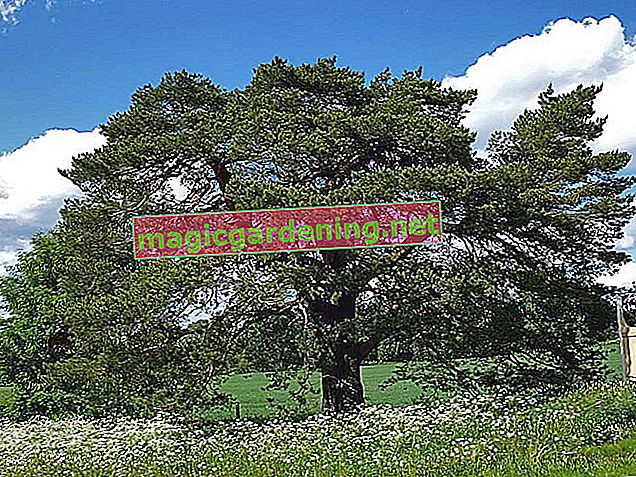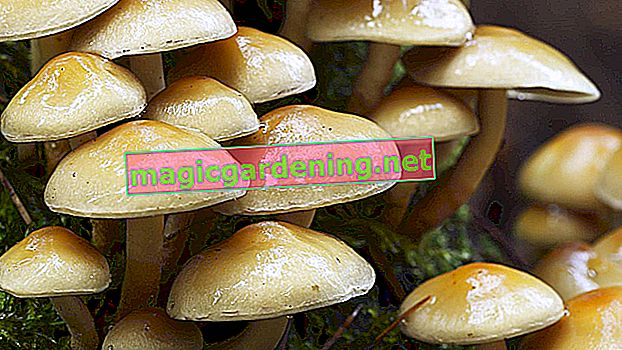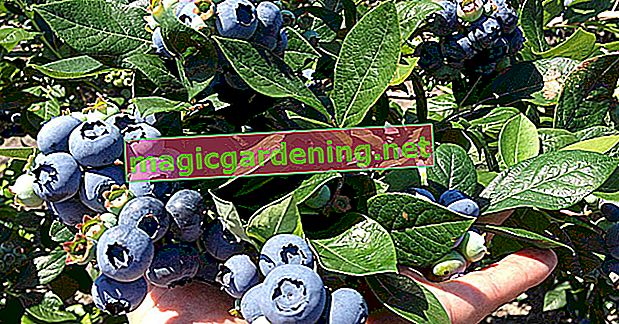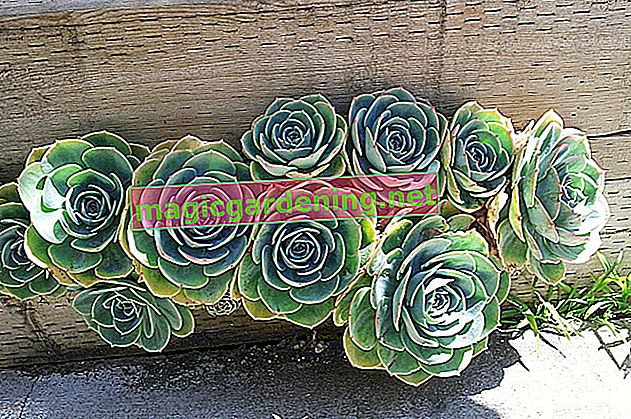
origin
Aeonium describes a genus within the thick-leaf family. The 40 species are mainly found in the Canary Islands. Two representatives within the genus grow on Madeira, while the species Aeonium gorgoneum is native to Cape Verde. Further areas are located in southwest Morocco and in the East African Semien Mountains.
also read
- How do I overwinter my Aeonium?
- Can I propagate my Aeonium arboreum myself?
- The best care tips for the checkerboard flower
Of these species, Aeonium arboreum, which bears the German name Rosetten-Dickblatt, is preferably cultivated as an ornamental plant. This species is native to the Canaries, where it occurs at altitudes between 200 and 1,500 meters.
growth
Aeonium arboreum grows as a subshrub that develops branches with age. Its growth is reminiscent of the shape of a tree. While the succulents grow up to two meters high in nature, they reach heights of up to 100 centimeters in culture. The shoot axes are based on the position of the sun. This creates ascending and winding growth forms. They are one to three centimeters thick in diameter and have a smooth surface that is not patterned like a network.
leaves
Typical of thick-leaf plants are fleshy, thickened leaves that appear in rosettes at Aeonium arboreum at the end of the shoot. The leaf rosettes reach a diameter between ten and 25 centimeters. In the center of the rosette, fresh leaves emerge that are initially tightly pressed together.
The spatulate leaves, which are covered with light hairs on the edge, grow between five and 15 centimeters long. They are green in color and have a shiny leaf surface. Some varieties develop purple or variegated foliage. Red-leaved varieties lose their leaf color in shady locations. If there is a lack of light in winter, they can turn completely green.
blossom
Between spring and summer, rosette leaves develop cone-shaped inflorescences, which arise in the middle of the leaf rosette and are between 20 and 30 centimeters high. In the inflorescences there are numerous small flowers whose petals are colored golden yellow. The individual flowers follow a nine- to eleven-fold structure. During the flowering period, the plants draw the energy from the leaves and invest it in the growth of the inflorescence. The leaf rosette wilts over time.
use
Aeonium species are primarily grown as ornamental foliage plants. With their picturesque growth and the striking panicles of flowers, they are ideal for designing pots. They decorate interiors or winter gardens, where they can be cultivated all year round. During the summer months from the beginning of May to October at the latest, the plants decorate top apartment arrangements on balconies or terraces.
Is Aeonium Poisonous?
There is no evidence of any toxic ingredients. You can safely use the plants to decorate children's rooms and there is also no risk of poisoning for pets. In some countries the leaves are used medicinally or in small quantities for salads.
Which location is suitable?
The rosette thick leaf prefers a place with bright conditions all year round, where there is no direct sunlight. The ideal location is in a partially shaded greenhouse or on a window sill facing west or east. Here the plants are protected from the direct midday sun. In the absence of light, the leaves deform. They grow unnaturally long. The winter garden is also suitable as a place to grow. The plants need room temperature. Between May and October, Aeonium arboreum enjoys a place outdoors.
What soil does the plant need?
The thick-leaf plants prefer a sandy substrate with small amounts of clay or loam. They grow in moderately dry to slightly damp conditions. Well-drained soil favors growth. Aeonium arboreum thrives in neutral substrates that are poor in humus and therefore provide moderate nutrients. A pH value of 6.5 is ideal.
The perfect mix:
- 60 percent cactus soil
- ten percent clay
- 30 percent mineral components
Cuttings
If your rosette thick leaf has branched out, you can cut these off and propagate them as head cuttings. The mother plant should keep at least one rosette of leaves so that it can continue to grow. Cut off a three to four inches long shoot at the beginning of the growing season. Allow the cut to dry for about three days before you place the head cuttings in growing medium (9.05 € at Amazon *).
Place the planter in a bright spot out of direct sunlight. Keep the substrate evenly moist. It takes between three and four weeks for the cuttings to develop roots. After six weeks you can repot the young plants.
sowing
Plants without branches can only be propagated by seeds. The seeds are scattered on a well-drained and nutrient-poor substrate, which consists of cactus soil and sand. The seeds need a lot of light and should therefore not be covered with soil. Cover the seed tray with a transparent container so that the soil does not dry out. At the same time, the humidity remains constant. At temperatures between 23 and 28 degrees Celsius, the seeds begin to germinate after two to three weeks.
Aeonium in the pot
Aeonium arboreum is grown in pots, as the plant is not suitable for outdoor use. Use a clay pot, as this is stable and gives the top-heavy plants sufficient stability. Lighter pots can be weighed down with stones that you distribute on the substrate. In contrast to plastic, clay regulates the moisture content in the substrate because the water can escape through the pores. A drain hole on the floor is important. During the summer months, you can sink the bucket into a suitable location in the garden.
balcony
The rosette thick leaf tolerates a location on the balcony, provided that it offers wind and sun-protected conditions. Green-leaved varieties are sensitive to sudden changes of location. They need to be slowly accustomed to brighter lighting conditions as their leaves burn quickly. Thick-leaved varieties with red leaves tolerate direct sunlight better. As a precaution, you should not place these plants directly from the partially shaded windowsill in the direct midday sun.
Glasshouse
The conditions here are ideal in terms of temperature and humidity. Make sure that the greenhouse is not exposed to direct sun. Frosted glass can help as it provides diffuse light. The greenhouse should be adequately ventilated during the summer months. A change of location takes place in autumn when the temperature in the greenhouse falls below ten degrees Celsius during the winter months.
Pour aeonium
The succulent plants have a moderate need for water. The root ball prefers a slightly moist substrate. Water the plant when the soil has dried to a depth of two centimeters. Use rainwater or stale tap water. If you forget to water, the thick leaf will forgive you. Waterlogging leads to rotten roots. During the resting phase in winter, the watering amount is reduced to a minimum so that the substrate does not dry out completely.
Humidity:
- Water less in rooms with high humidity
- Plants tolerate low humidity
- if the air is dry, more frequent watering is required
Fertilize aeonium properly
The nutrient requirement of the plants is low. Aeonium arboreum does not have to be fertilized in the first year. When the growth phase begins in the spring of the second year, the succulents enjoy a low supply of nutrients. Give the plant a low concentration of cactus fertilizer every four weeks. The fertilization will stop in September. Freshly repotted plants do not need to be fertilized in the same year.
Properly cut aeonium
With age, the succulents branch out more and more. They grow both in height and in width, making them too big for the windowsill. Healthy plants tolerate pruning without any problems. Remove annoying secondary shoots. They can be used for rejuvenation. If the plant develops panicles of flowers, they do not need to be removed immediately after flowering. The plant develops adventitious buds on the shoots, which sprout again.
How do I transplant properly?
It takes three to four years for the plant to completely root the substrate. You can orientate yourself on the width of the plant. If the secondary shoots protrude beyond the edge of the pot, repotting is recommended. If you water the plant regularly with tap water, lime can build up in the substrate. Give the plant fresh substrate every one to two years so that it does not become too calcareous.
Overwinter
From mid-October the rosette thick leaf needs a rest phase. Place the plant in a bright wintering area where the temperature does not drop below ten degrees Celsius. Care is limited during this time. Since the plants do not shed their leaves, they also need moisture in winter.
Continue reading
lice
Lice occasionally infest aeonium species when the air is very dry. The pests pull sap from the leaf veins and cause unsightly discoloration on the leaves. In winter the plants are more susceptible to pest infestation.
Mealybugs or mealybugs
The pests secrete a white secretion, which covers the body like a protective fluff. Since an infestation can lead to stunted growth, the lice should be controlled actively or indirectly. Preparations with neem oil have proven to be effective means of spraying the leaves. Insecticide sticks are stuck into the earth.
Aphids
The rapidly multiplying pests should be sprayed off with a jet of water. To combat the eggs, stinging nettle or garlic brews can be sprayed on the leaves.
Tips
The rosette thick leaf is particularly attractive between rock umbilical herb and white sedum plant. This plant arrangement is reminiscent of the dry rocky deserts of the Canary Islands.
sorts
- Atropurpureum : maroon leaves. Blooms in August. Up to 100 cm high.
- Zwartkop : Dark purple to black leaves. Blooms in May. Growth height up to 100 cm.
- Luteovariegatum : leaves green with yellow stripes. Flowers in summer. Up to 50 cm high.

